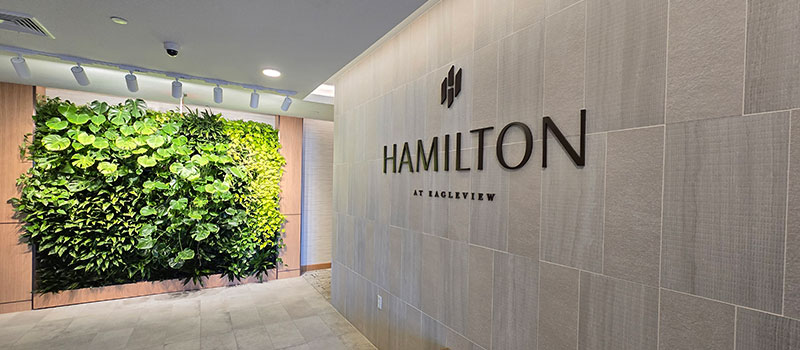Strategy 1: Regulating for Energy Conservation and Efficiency in the Zoning and Subdivision and Land Development Ordinances
Overview
The zoning ordinance controls use of land and the form and extent of development. In addition, zoning can provide incentives that encourage development that meets a community's goals — including more sustainable development.
The subdivision and land development ordinance (SALDO), in conjunction with elements of the zoning ordinance, provides standards for how lots or new property lines are created and the development of buildings and improvements, sidewalk design, landscaping, basic building design, and street/streetscape design.
Related to energy conservation and transitioning to renewable energy, municipal zoning and SALDO ordinances can regulate:
- Where certain uses are permitted in a community.
- The type, size, and placement of principal and accessory structures on a parcel.
- Impervious surface and lot coverage limits.
- Building exterior design such as windows, facade treatments, and door placement.
- The preservation of natural resources on a property.
- The amount and type of landscaping that is required to be installed.
- The location of renewable energy systems, such as rooftop and ground-mounted solar arrays.
Regulating Building Orientation and Placement
Ordinance Examples — Building Orientation and Placement
Hampden Township in Cumberland County, PA has a Planned Residential Development ordinance that encourages innovations in residential design and efficient use of the land where housing type, design, and layout are proposed based on the characteristics of a particular site. Energy saving techniques may be applied, including clustering of development, higher densities than normally allowed, mix of housing types and uses, and flexibility in layout.
Palmer Township in Northampton County, PA is a suburban community that has planned for higher density residential development in their High-Density Residential District. While not explicitly designed for energy conservation, the higher density will promote efficiencies.
Lower Providence Township in Montgomery County's Subdivision and Land Development Ordinance contains a provision encouraging streets to be oriented in an east-west direction to allow structures to optimize their southern exposure for solar energy.
When considering building orientation and placement, it is important to assess how the building will receive sunlight and wind. Properly orienting a building will ensure the building will gain solar heat in the winter and be shaded in the summer. Solar access is maximized by orienting a new building on an east-west axis within 20 degrees of south. New homes and businesses may have associated outbuildings such as garages, sheds, barns and storage buildings that are not heated or cooled. When feasible, these unheated buildings should be placed upwind from the home or heated building in the direction of the prevailing winds, which is primarily to the west and northwest in Pennsylvania. These buildings serve as a windbreak to protect the heated building from winter winds.
This same concept can be used by itself or in combination with other natural elements such as landforms and vegetation to create windbreaks that effectively lower heating costs. Municipalities can require that applicants for new construction and renovations show proposed landscaping, building orientation, and direction of prevailing winds on a site analysis plan submitted with their application.
Building orientation requirements should be considered in tandem with other community development goals. For example, rigidly applied building orientation requirements could result in more disturbance to sensitive natural areas on a site or could cause buildings to "turn their backs to the street", reducing walkability and diminishing a neighborhood's appearance.
Building density is also a key factor in conserving energy: the fewer exterior walls, the lower energy usage is typically. Higher density developments have an energy advantage over detached units in that they have a lower proportion of exterior surfaces to interior space. Compact, higher density development also typically has less embodied energy within streets, utilities, and other infrastructure than low density, detached development.
Landscaping for Energy Conservation
The landscaping installed or the natural features preserved on a site can significantly impact energy conservation. Vegetation can be utilized in multiple ways to lower heating and cooling costs, which should be considered when landscaping around new and existing buildings.
Ordinance Examples — Landscaping
North Lebanon Township in Lebanon County, PA requires landscaped wind breaks between the parking lots and buildings and along buildings that face westerly, southwesterly or northwesterly. The ordinance also requires that plantings should not be designed to interfere with southern exposure to solar radiation.
Preserving or installing native shade trees can have a tremendous impact on heating and cooling costs. Properly placed shade trees can reduce cooling costs by up to 25 percent. Deciduous trees work best because they shade buildings in the summer but allow the sun to heat buildings in winter. The planting of shade trees should also be considered over air conditioning units, patios, driveways and roadways.
Tall deciduous trees can be planted to the south of the building to provide maximum summertime roof shading (unless the building will have a rooftop solar array). Trees or large shrubs with crowns lower to the ground can be planted to the west of the structure where shade is needed from lower late afternoon sun angles, or to the south on solar-heated homes. More information can be found in the US Department of Energy's guidance on Landscaping for Shade and their Consumer Guide to Home Landscaping.
For buildings on windy sites, like those on or near ridgelines, hedgerows, whether existing or proposed, can serve as effective windbreaks, reducing heat loss caused by winter winds. Evergreen trees make the most effective windbreak and should be planted upwind of the building.
Energy Efficient Exterior Lighting
Ordinance Examples — Exterior Lighting
The following ordinances have been curated by WeConservePA.org as examples of Pennsylvania municipalities that have adopted exemplary lighting ordinances.
- London Grove Township
- North Coventry Township
- Wallace Township
- Westtown Township
- West Whiteland Township
Other examples include the Borough of Ambler's recently adopted outdoor lighting ordinance, and the 2009 Indian Valley Regional Planning Commission's model outdoor lighting ordinance.
Lighting fixtures that use inefficient technology, are poorly targeted, or operate at unnecessary times of day waste energy. The International Dark-Sky Association estimates that 15 million tons of carbon dioxide are emitted in the United States each year to power residential outdoor lighting, and that at least 30% of this light is wasted by unshielded or poorly aimed fixtures. Municipalities can use lighting ordinances to ensure safe, aesthetically pleasing, and energy-efficient lighting by mandating or encouraging the use of shielded light fixtures, intelligent timing controls, improved technology (such as LED lighting), requiring lighting be dimmable during off-peak hours when appropriate, and other methods. Lighting requirements can be context-sensitive, requiring brighter lighting in high-traffic and commercial locations, and allowing dimmer lighting (or no lighting at all) in residential neighborhoods.
LED lighting has become less expensive in recent years, creating a natural transition away from older, less efficient light sources like metal halide and high-pressure sodium. Although lower color temperatures of LED light (warmer whites and amber light- 2000-3000 K) use more energy than higher color temperatures, higher color temperature lights (cooler whites with more blue light- 3000K and higher) have been shown to negatively impact human health and wildlife by affecting circadian rhythms.


